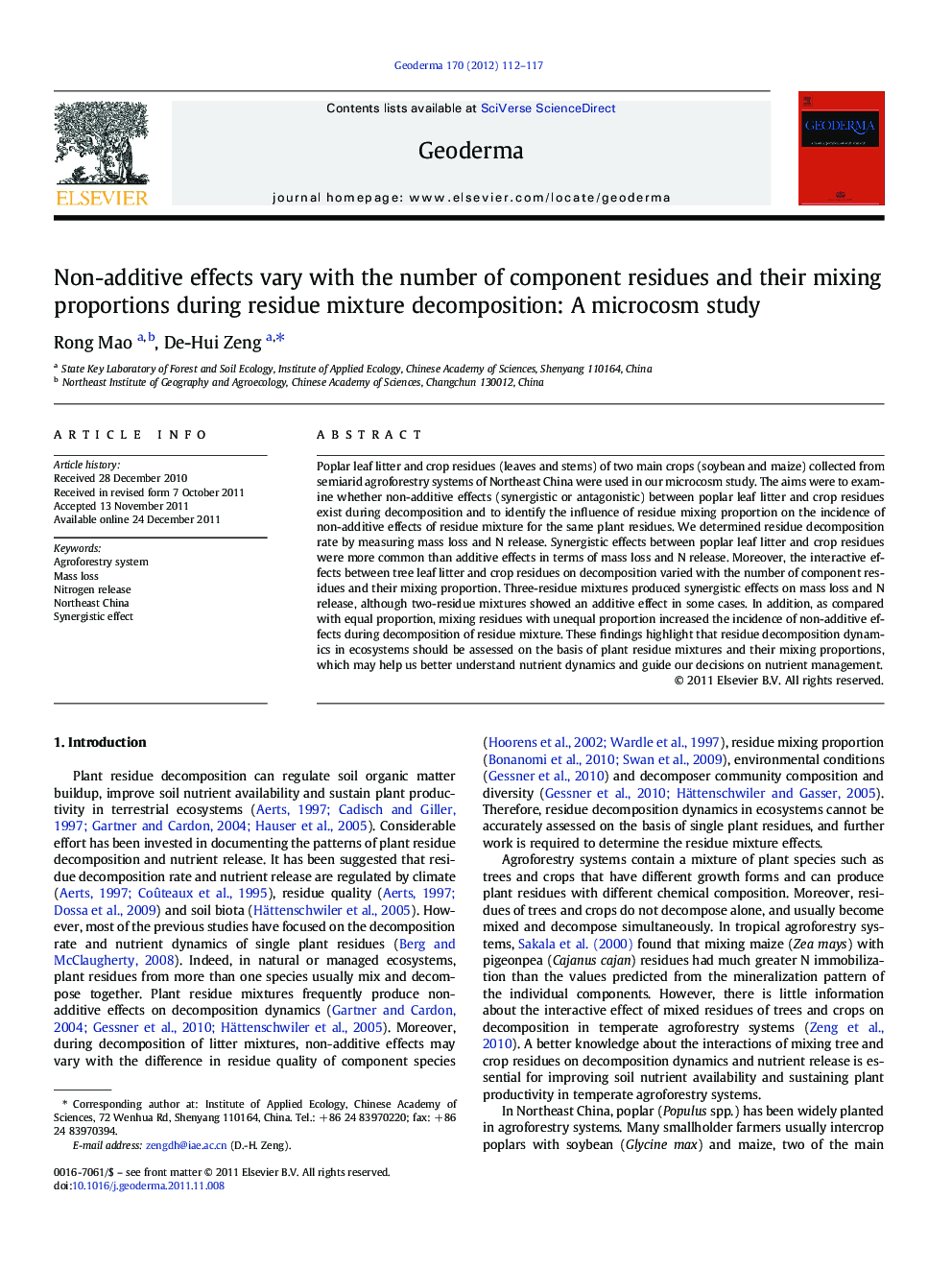| Article ID | Journal | Published Year | Pages | File Type |
|---|---|---|---|---|
| 4573893 | Geoderma | 2012 | 6 Pages |
Poplar leaf litter and crop residues (leaves and stems) of two main crops (soybean and maize) collected from semiarid agroforestry systems of Northeast China were used in our microcosm study. The aims were to examine whether non-additive effects (synergistic or antagonistic) between poplar leaf litter and crop residues exist during decomposition and to identify the influence of residue mixing proportion on the incidence of non-additive effects of residue mixture for the same plant residues. We determined residue decomposition rate by measuring mass loss and N release. Synergistic effects between poplar leaf litter and crop residues were more common than additive effects in terms of mass loss and N release. Moreover, the interactive effects between tree leaf litter and crop residues on decomposition varied with the number of component residues and their mixing proportion. Three-residue mixtures produced synergistic effects on mass loss and N release, although two-residue mixtures showed an additive effect in some cases. In addition, as compared with equal proportion, mixing residues with unequal proportion increased the incidence of non-additive effects during decomposition of residue mixture. These findings highlight that residue decomposition dynamics in ecosystems should be assessed on the basis of plant residue mixtures and their mixing proportions, which may help us better understand nutrient dynamics and guide our decisions on nutrient management.
► We determined decomposition rate of mixing poplar leaf litter and crop residues. ► Synergistic effect of litter mixtures was more common than additive effect. ► Litter mixture effect varied with number and mixing ratio of component litter. ► Litter decomposition should be assessed based on litter mixture and mixing ratio.
